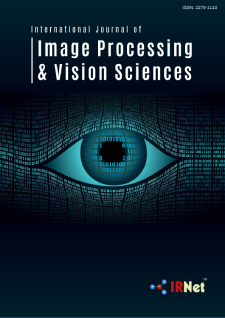International Journal of Image Processing and Vision Science IJIPVS
ISSN: 2278-1110

Abstracting and Indexing


IJIPVS
Illumination Insensitive Face Recognition Using Gradientfaces Illumination Insensitive Face Recognition Using Gradientfaces
Raghu. C.N
Department of Electronics and communication Sri Siddhartha Institute of Technology Tumkur- 572105,Karnataka, India,
Abstract
The performance of most existing face recognition methods is highly sensitive to illumination variation. It will be seriously degraded if the training/testing faces under variable lighting. Thus, illumination variation is one of the most significant factor affecting the performance of face recognition and has received much attention in recent years. In this paper we propose a novel method called gradientface for face recognition under varying illumination. When we rarely know the strength, direction or number of light sources. The proposed method has the ability to extract illumination insensitive measure, which is then used for face recognition. The merits of this method is that neither does it require any lighting assumption nor does it need any training images. Gradientface method reaches very high recognition rate of 98.96% in the test on yele B face database. Further more the experimental results on Yale database validate that gradient faces is also insensitive to image noise and object artifacts such as facia;l expression.
Recommended Citation
[1] H. Shim, J. Luo, and T. Chen, “A subspace model-based approach to face relighting under unknown lighting and poses,” IEEE Trans. Image Process., vol. 17, pp. 1331–131, 2008. [2] T. Zhang, B. Fang, Y. Y. Tang, G. He, and J. Wen, “Topology preserving non-negative matrix factorization for face recognition,” IEEE Trans. Image Process., vol. 17, pp. 57–58, 2008.[3] J. Zou, Q. Ji, and G. Nagy, “A comparative study of local matching approach for face recognition,” IEEE Trans. Image Process., vol. 16, no. 10, pp. 2617–2628, Oct. 2007. [4] Z. Liu and C. Liu, “A hybrid color and frequency features method for face recognition,” IEEE Trans. Image Process., vol. 17, pp. 1975–1980, 2008. [5] S. M. Pizer and E. P. Amburn, “Adaptive histogram equalization and its variations,” Comput. Vis. Graph., Image Process., vol. 39, no. 3, pp. 355–368, 1987. [6] S. Shan,W. Gao, B. Cao, and D. Zhao, “Illumination normalization for robust face recognition against varying lighting conditions,” in Proc. IEEE Workshop on AMFG, 2003, [7] M. Savvides and V. Kumar, “Illumination normalization using logarithm transforms for face authentication,” in Proc. IAPR AVBPA, 2003, pp. 59–556. [8] D. W. Jacobs, P. N. Belhumeur, and R. Basri, “Comparing images under variable illumination,” in Proc. IEEE Conf. Computer Vision and Pattern Recognition, 1998, pp. 610–617. [9] J. Tumblin and G. Turk, “LCIS: A boundary hierarchy for detail-pre- serving contrast reduction,” in ACM SIGGraph, 1999, pp. 83–90. [10] A. S. Georghiades, P. N. Belhumeur, and D. J. Kriegman, “From few to many: Generative models for recognition under variable pose and illumination,” in Proc. th IEEE Int. Conf. Automatic Face and Gesture Recognition, 2000, pp. 277–28